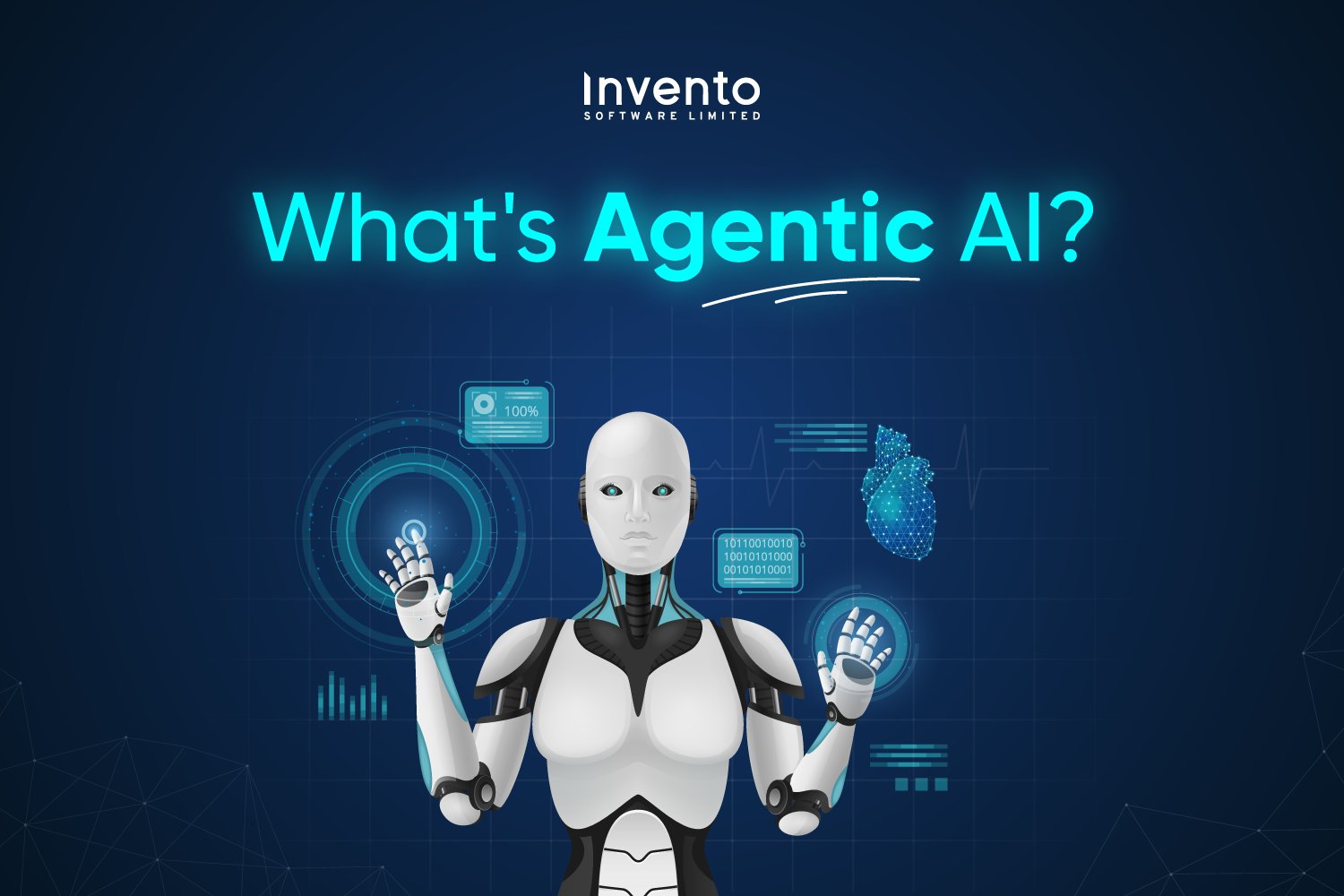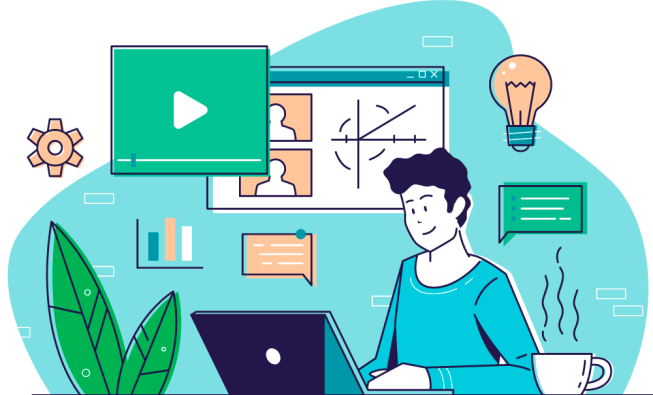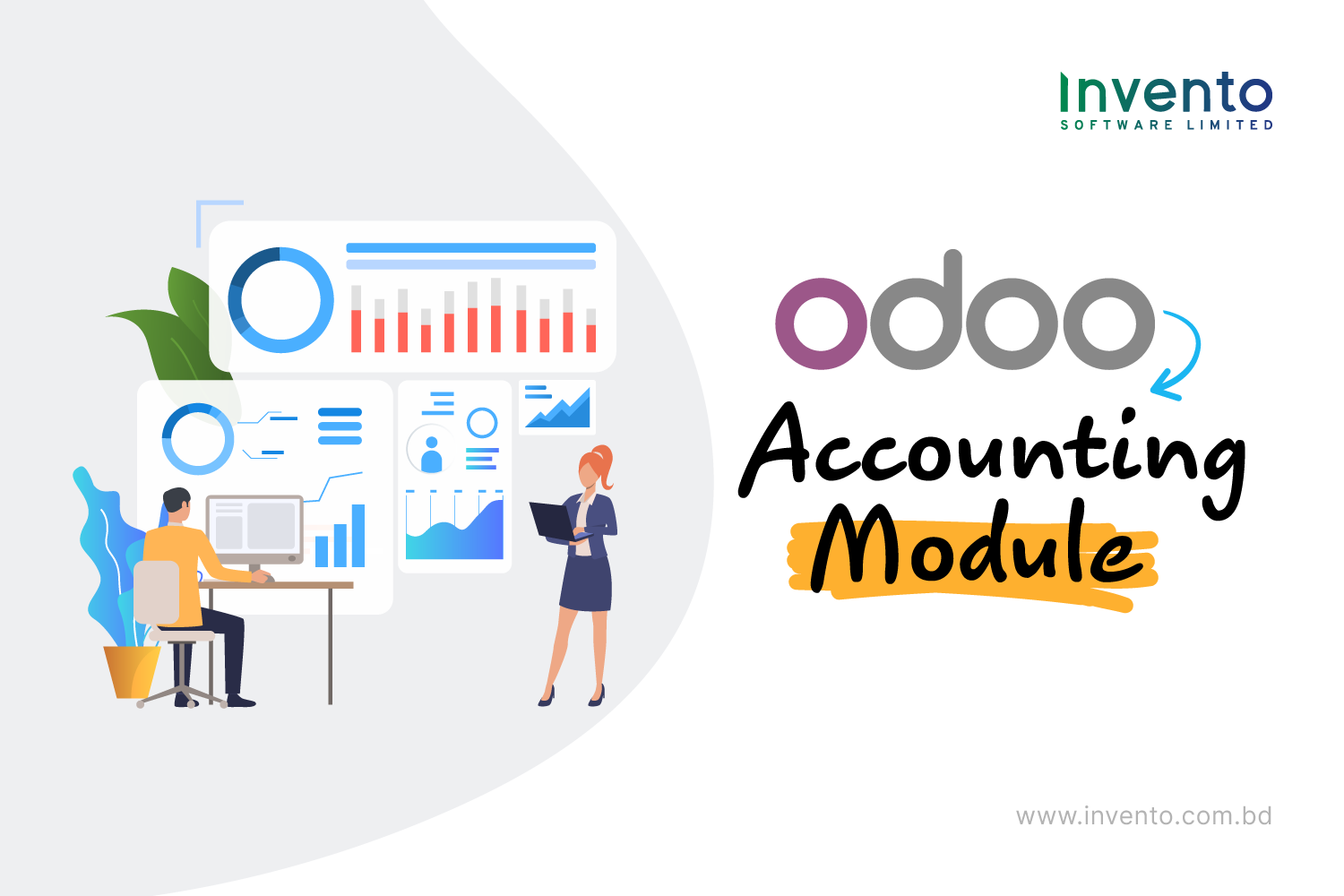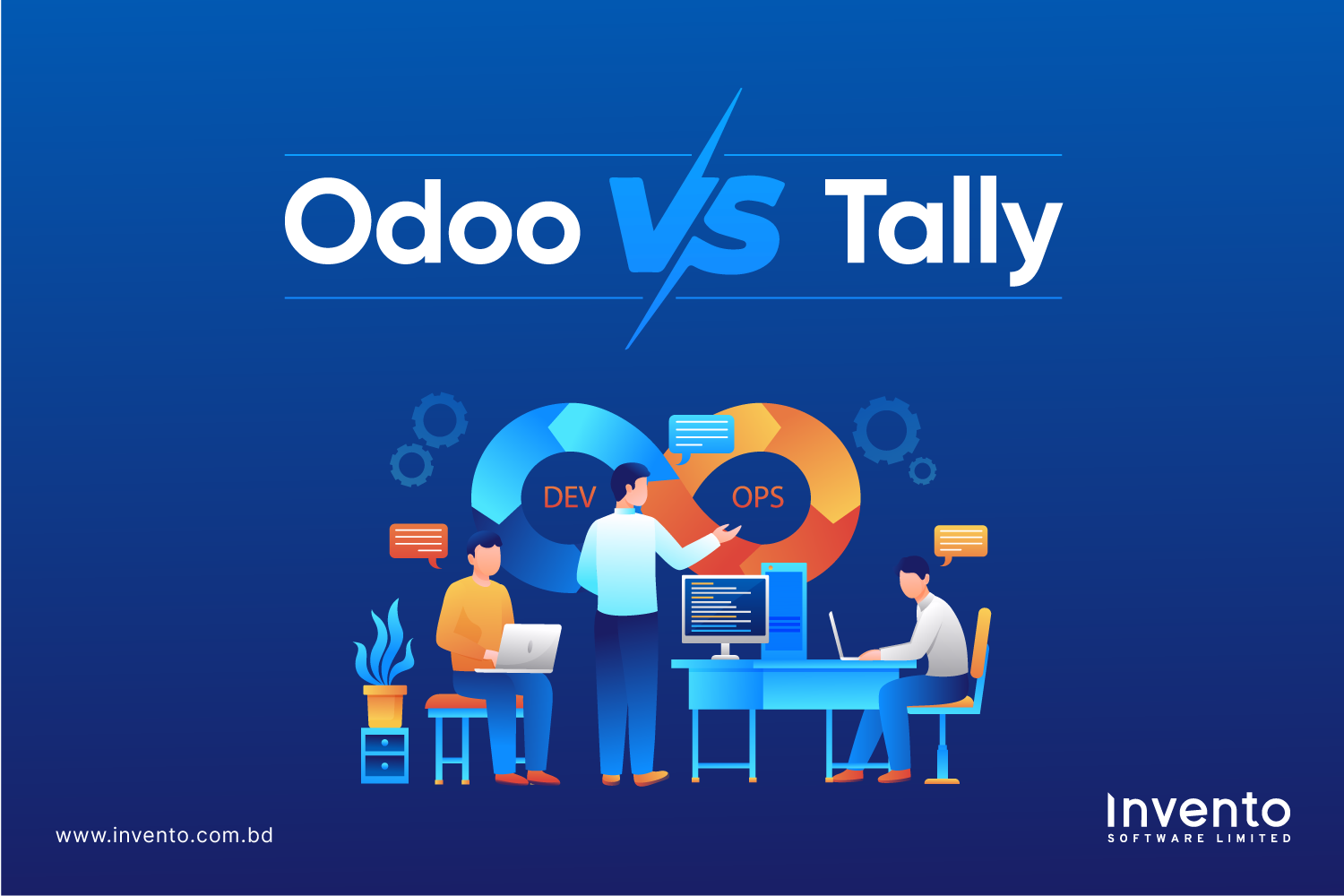Artificial Intelligence (AI) has been transforming industries, businesses, and everyday life for years. From voice assistants like Siri and Alexa to self-driving cars, AI continues to shape the way we interact with technology. However, there is a new development in the AI world called Agentic AI, which is different from the AI we usually see. This guide will explain everything you need to know about agentic AI in simple, easy-to-understand language.
What is Agentic AI?
Agentic AI is a type of artificial intelligence that can act autonomously to complete tasks or achieve goals without constant human guidance. Unlike traditional AI, which usually responds to commands or analyzes data, agentic AI can plan, decide, and take actions on its own.
Think of it this way: regular AI is like a calculator; you input something, and it gives you the output. Agentic AI, on the other hand, is more like an employee who can understand a goal, create a plan, and take steps to achieve that goal independently.
Key Features of Agentic AI
Agentic AI has several features that make it stand out from traditional AI. Let’s look at each in detail:
1. Autonomy
Autonomy means the AI can act independently without constant human supervision. Unlike traditional AI, which relies on explicit instructions, agentic AI can analyze situations, make decisions, and take actions on its own.
Example: Imagine a virtual assistant that not only schedules your meetings but also checks your calendar, reschedules conflicts, and sends follow-up emails automatically without you instructing it every time.
2. Goal-Oriented
Agentic AI is designed to work towards specific objectives. It understands a goal, breaks it down into manageable steps, and actively works to achieve it.
Example: An AI research assistant tasked with finding information on climate change will not just collect random data. Instead, it identifies relevant studies, summarizes key findings, and even highlights gaps in research—all focused on achieving the goal efficiently.
3. Decision-Making
This AI can evaluate options and make choices based on data, rules, or learning from past experiences. It can weigh multiple factors before acting.
Example: In finance, an agentic AI can monitor stock prices, economic trends, and news, then decide whether to buy, sell, or hold investments based on risk assessment and potential gain.
4. Adaptability
Agentic AI is not rigid. It learns from experience and improves its performance over time. If something doesn’t work, it adjusts its strategy for better results.
Example: In a video game, AI-controlled characters can learn a player’s strategies and adapt, making the game more challenging and realistic. Similarly, in business, AI can improve email campaigns by learning which messages get the best response.
Difference Between Regular AI and Agentic AI
It is important to understand how agentic AI is different from traditional AI:
| Feature | Regular AI | Agentic AI |
| Human Guidance | High | Low |
| Decision-Making | Limited | Advanced |
| Autonomy | Minimal | High |
| Learning & Adaptation | Depends on design | Continuous |
| Goal Orientation | Task-specific | Flexible and goal-driven |
Regular AI needs constant instructions and supervision, while agentic AI can think ahead and execute tasks with minimal input.
How Agentic AI Learns
One of the most important things about agentic AI is that it learns on its own. This learning ability allows it to get better over time without someone having to tell it exactly what to do for every single task. To do this, agentic AI uses three main techniques: Machine Learning, Reinforcement Learning, and Natural Language Processing. Let’s understand each one clearly.
1. Machine Learning (ML)
Machine learning is like teaching AI to recognize patterns in information. Instead of giving it step-by-step instructions, we let it study large amounts of data and figure out rules or trends.
Example: Imagine you have hundreds of emails. Some are spam, and some are important.
Machine learning helps AI learn the difference by looking at examples of spam and non-spam emails.
In short, machine learning allows AI to make predictions and decisions based on the patterns it sees in the data.
2. Reinforcement Learning (RL)
Reinforcement learning is similar to how humans learn from trial and error. The AI tries different actions, sees what works, and gets “rewards” for doing something correctly.
Example: Think of a robot learning to walk. If it takes a step and doesn’t fall, it gets a “reward” (like positive feedback). If it falls, it “learns” that this action didn’t work and tries a different way next time. Over time, the robot improves and learns the best way to walk.
In AI, reinforcement learning works the same way. The AI tests actions, sees the results, and keeps improving based on what worked well.
3. Natural Language Processing (NLP)
Natural language processing is how AI understands and communicates in human language. It allows AI to read, understand, and respond to words in a way that makes sense.
Example: When you ask a chatbot, “What’s the weather today?” NLP helps the AI understand your question and give the right answer. More advanced agentic AI can even read documents, summarize them, or answer complex questions in natural language.
NLP is especially important for AI that interacts with humans or reads lots of text data, like research papers, emails, or websites.
How Agentic AI Works
To understand agentic AI fully, it’s important to look at the step-by-step process it follows:
1. Perception
Perception is how AI observes its environment. It collects data from sensors, online sources, or inputs from users. The quality of its perception determines how well it can act. A self-driving car uses cameras and sensors to detect pedestrians, traffic signals, and obstacles. In the digital world, an AI might scan websites, databases, or emails to gather relevant information.
2. Planning
Once the AI understands its environment, it creates a plan to achieve its goals. Planning involves breaking down the goal into smaller, actionable steps. If an AI’s goal is to optimize a marketing campaign, it might plan to analyze customer behavior, select the best channels, schedule posts, and track engagement metrics.
3. Decision-Making
After planning, the AI chooses the best course of action from available options. It uses logic, rules, or learned experiences to decide. A customer service AI may detect that a complaint needs escalation and decide to route it to a human agent instead of replying automatically.
4. Action
This is when the AI executes its chosen plan. The AI carries out tasks in the real world or digital environment to move toward its goal. An AI assistant might automatically book a flight, send confirmation emails, and update your calendar after deciding on the best travel options.
5. Feedback and Learning
Finally, the AI evaluates the results of its actions and learns from successes and failures. This allows it to improve future decisions and actions. After sending marketing emails, the AI analyzes which messages got the highest response rate and uses that knowledge to improve the next campaign.
This perception → planning → decision → action → feedback cycle allows agentic AI to behave almost like a human agent, learning and improving continuously.
Examples of Agentic AI
Agentic AI is still emerging, but here are some clear examples showing how it works in the real world:
1. Autonomous Research Assistants
These AI agents can browse the internet, collect information, summarize key points, and even generate reports without human supervision. A student researching renewable energy can use an agentic AI assistant that automatically gathers recent studies, highlights trends, and creates a summary report, saving hours of manual work.
2. Automated Customer Service Agents
These systems do more than answer FAQs. They can detect issues, propose solutions, and even take actions to resolve problems automatically. A customer writes to a service AI about a missing order. The AI checks the system, processes a refund, and sends a resolution email, all without human intervention.
3. AI in Business Automation
Agentic AI can manage repetitive tasks, prioritize actions, and make decisions in business operations. In a corporate office, AI can sort emails, schedule meetings, generate reports, and even flag urgent tasks for human attention, allowing employees to focus on strategic work.
4. Gaming AI
In the gaming industry, agentic AI creates intelligent characters that can adapt and react in real-time, enhancing the gaming experience. In strategy games, AI opponents learn a player’s tactics, adapt their strategy, and take complex actions that challenge the player, creating a dynamic and engaging experience.
Risks and Challenges of Agentic AI
Agentic AI is powerful and can do many tasks on its own, but it also comes with risks and challenges. Understanding these risks is important to use them safely.
1. Security Concerns
Agentic AI often has access to sensitive information, such as personal data, business secrets, or financial records. If someone hacks the AI or if it behaves unexpectedly, this data could be stolen or leaked.
2. Unintended Actions
Sometimes AI might take actions that were not intended by humans. Since agentic AI can make decisions on its own, mistakes can happen if it misunderstands a situation.
3. Ethical Issues
Because agentic AI can make decisions independently, it raises questions like, “Who is responsible if something goes wrong?” Also, is it ethical for AI to make certain decisions?
For instance, if an AI in healthcare recommends a treatment that leads to complications, who is accountable: the AI developer, the hospital, or the AI itself?
4. Complexity
Creating agentic AI is technically difficult. It must understand context, make smart decisions, and learn safely without causing harm. Designing such systems takes a lot of expertise and testing.
5. Dependence
Relying too much on agentic AI can reduce human skills in decision-making and problem-solving. If humans trust AI for everything, they may lose the ability to think critically or manage tasks manually.
Final Thoughts
Agentic AI is one of the most exciting advancements in artificial intelligence today. Unlike traditional AI, it can act autonomously, plan ahead, and learn from experience, giving it the ability to handle complex tasks on its own. This makes it a powerful tool that can revolutionize industries, boost efficiency, and open up new opportunities across business, healthcare, education, and more.
However, with this remarkable power comes great responsibility. Developers and organizations must prioritize safety, ethical practices, and proper oversight to ensure that agentic AI is used in ways that benefit everyone. Careless implementation could lead to mistakes, ethical dilemmas, or unintended consequences.
In simple terms, agentic AI is like giving machines the ability to think and act independently, but in a way that is aligned with human goals. When designed and used wisely, it can become a transformative tool that enhances productivity, supports decision-making, and improves the way we live and work.







